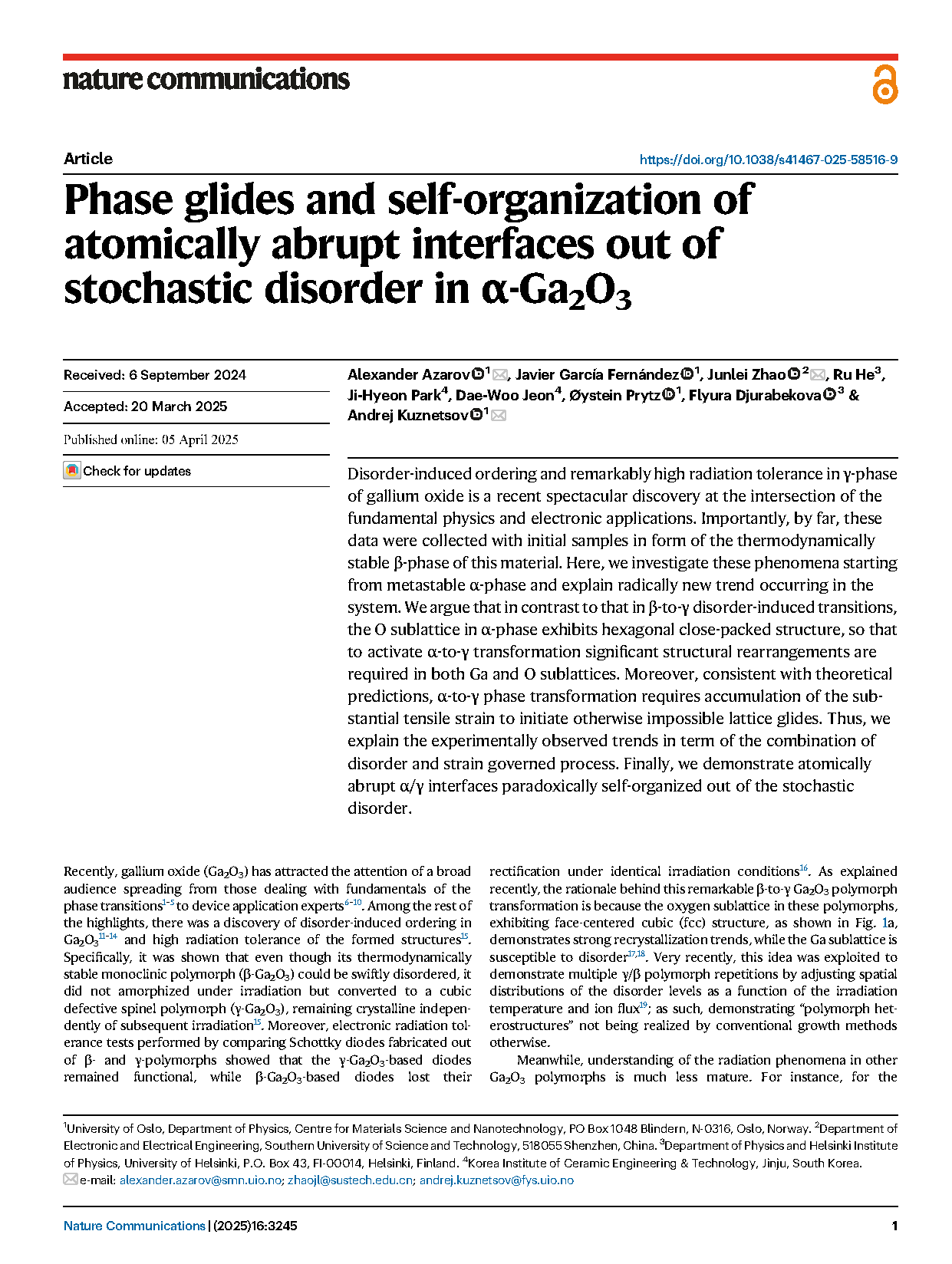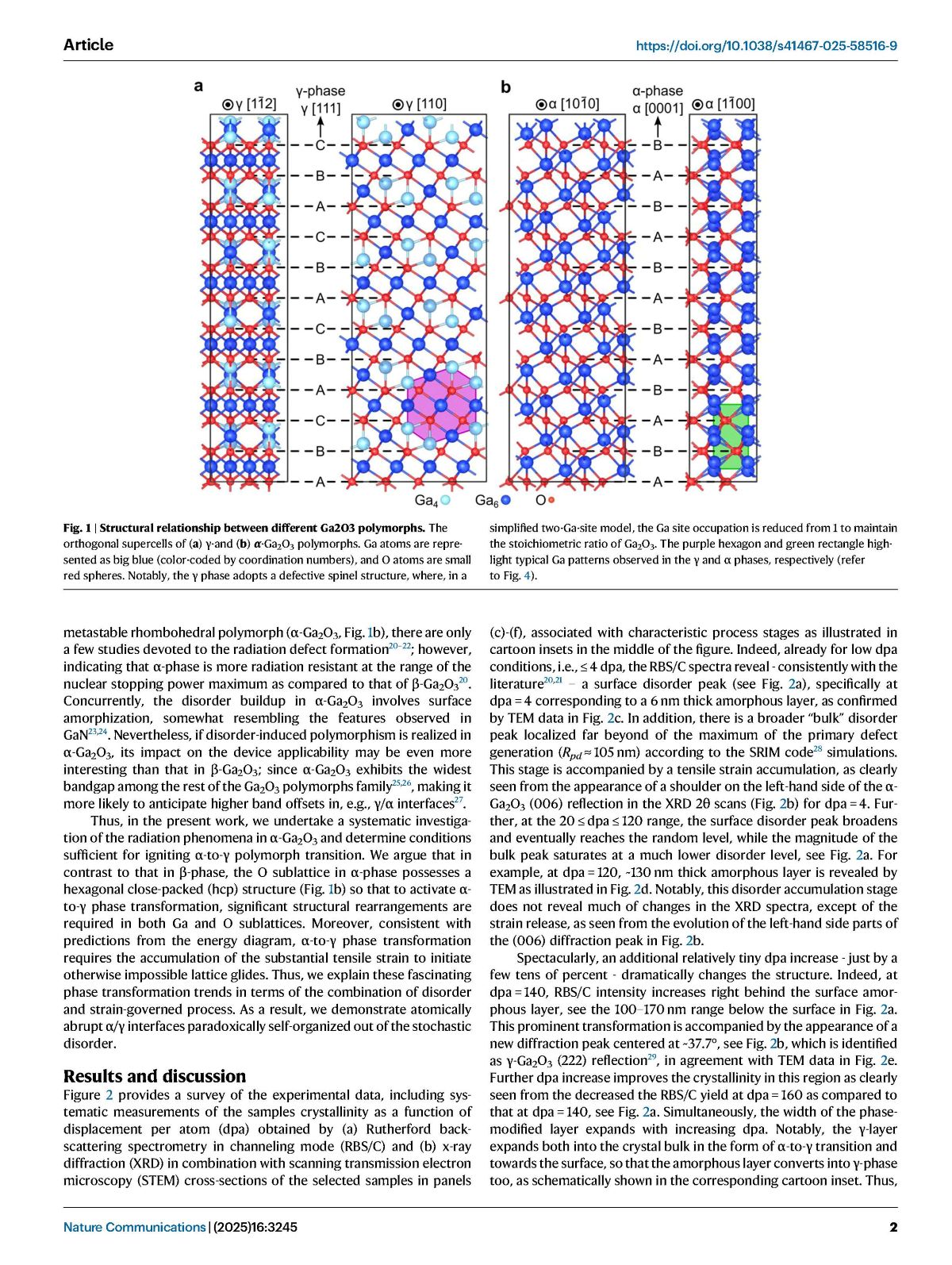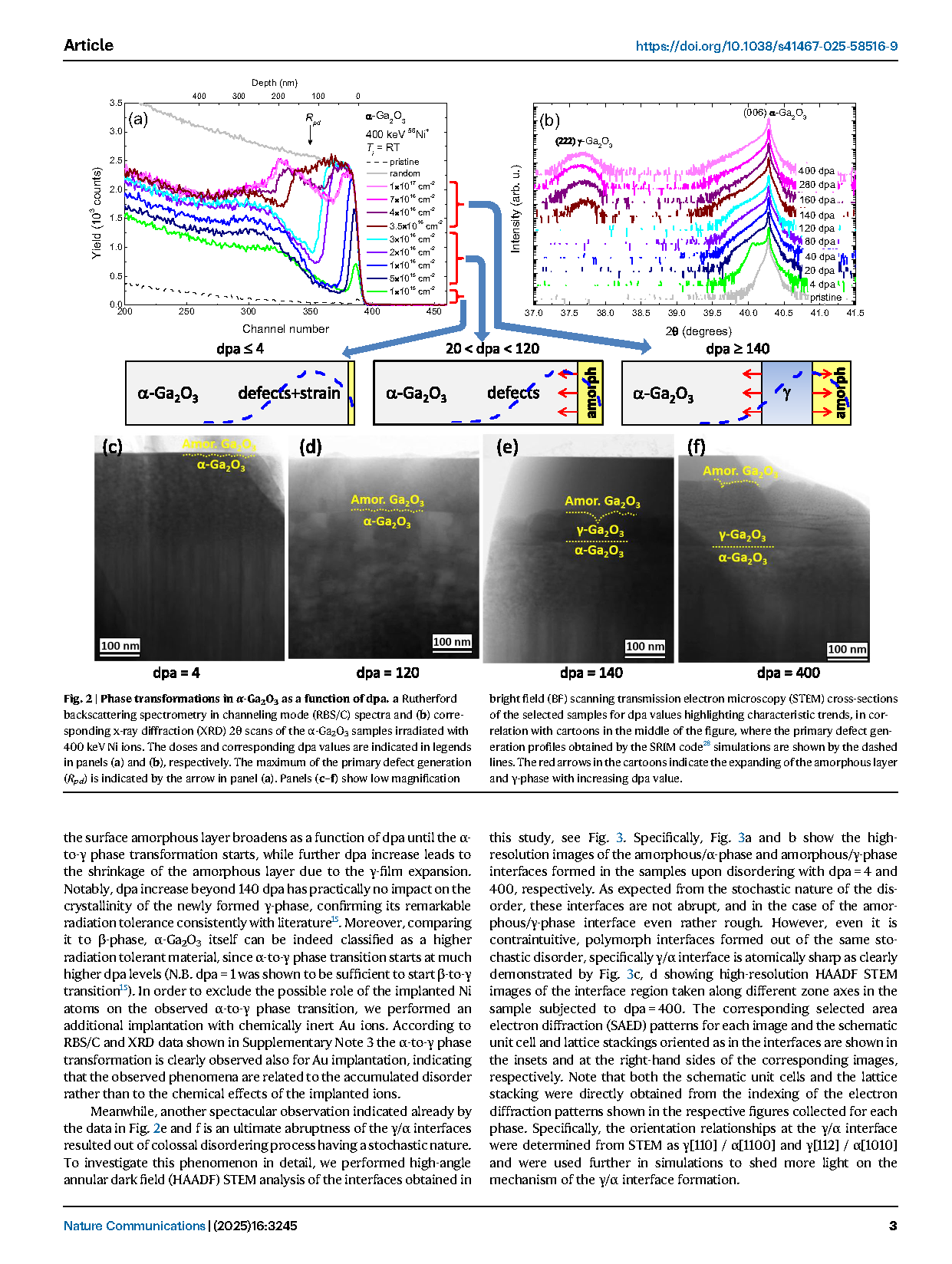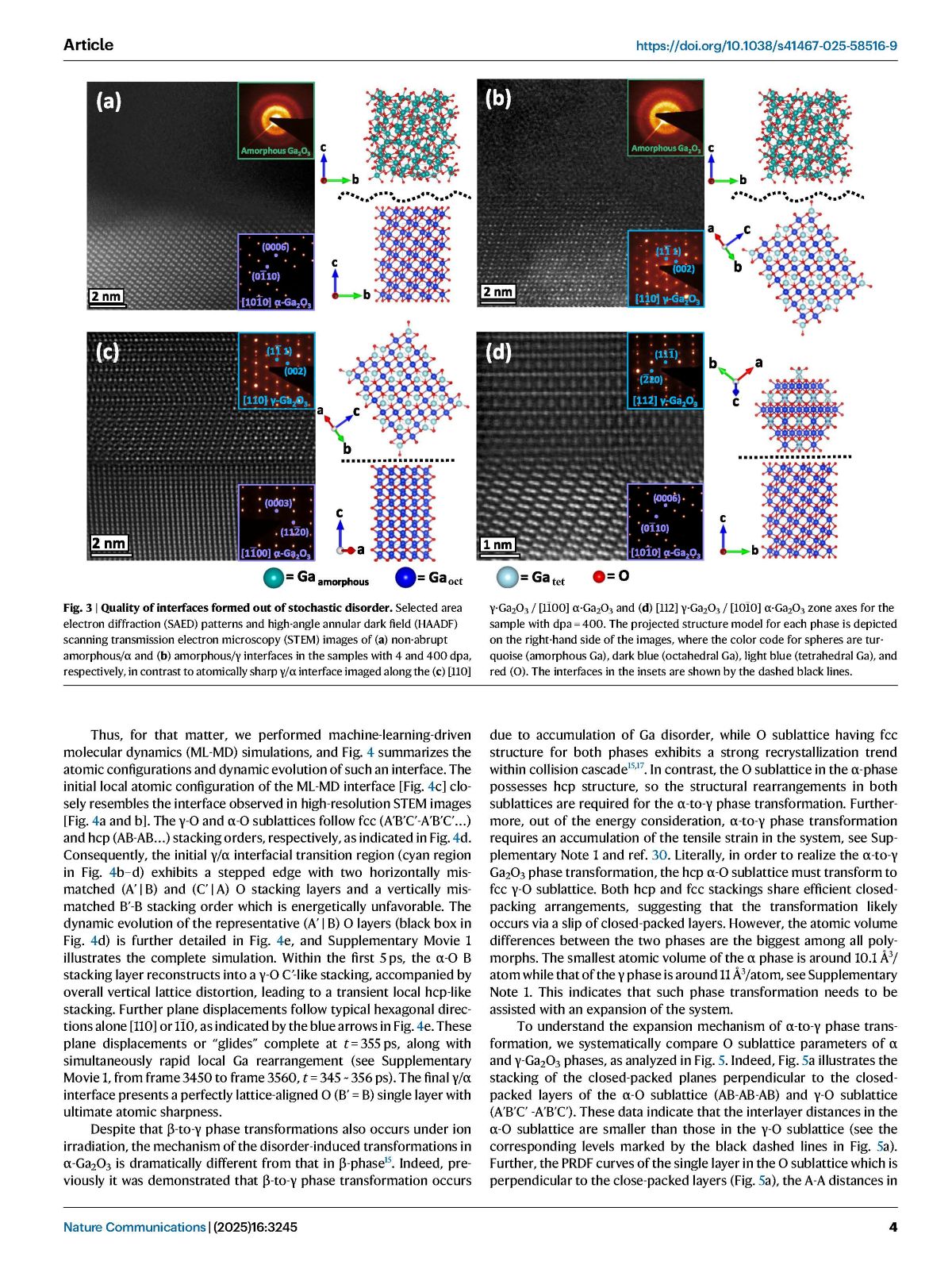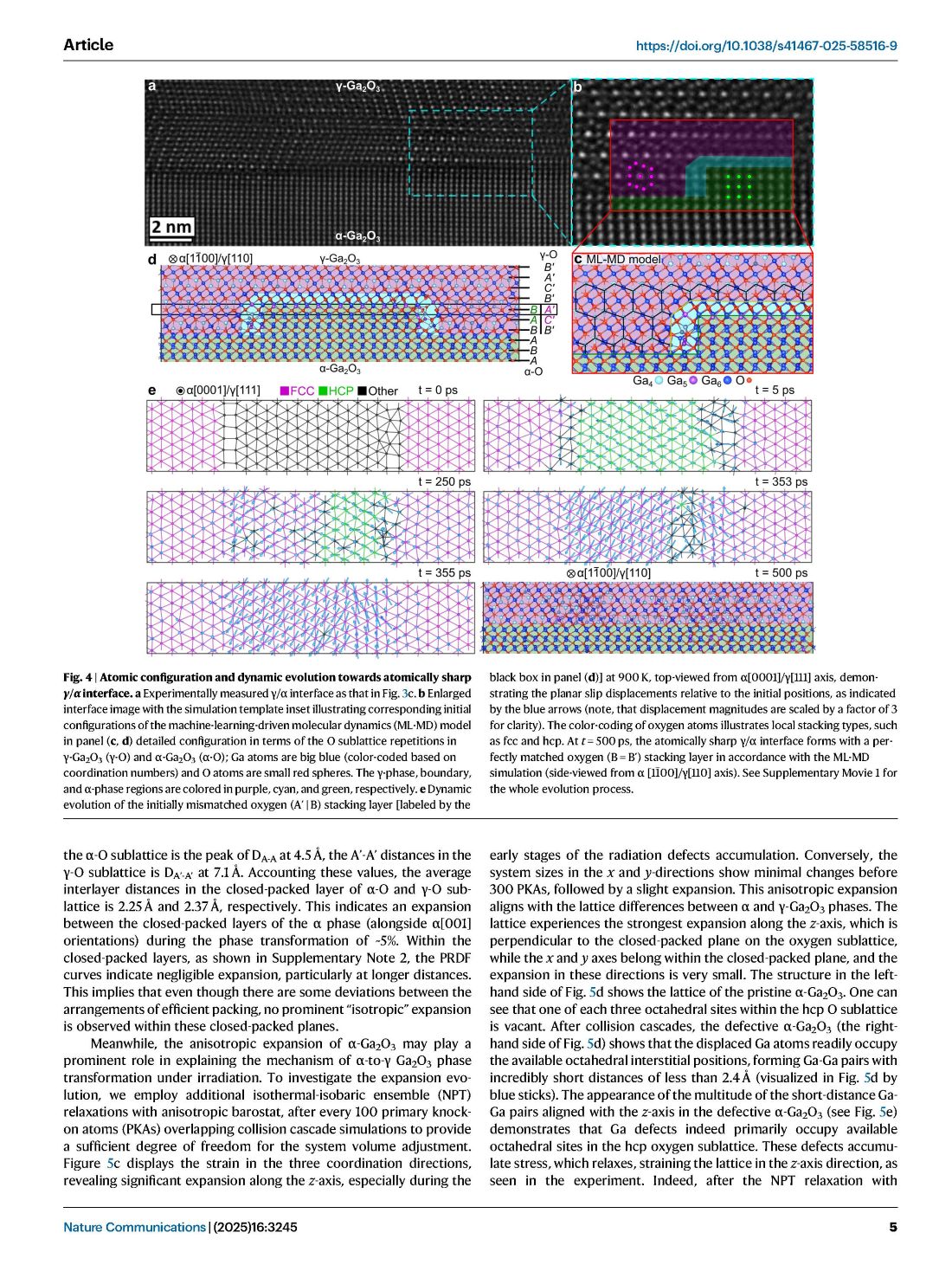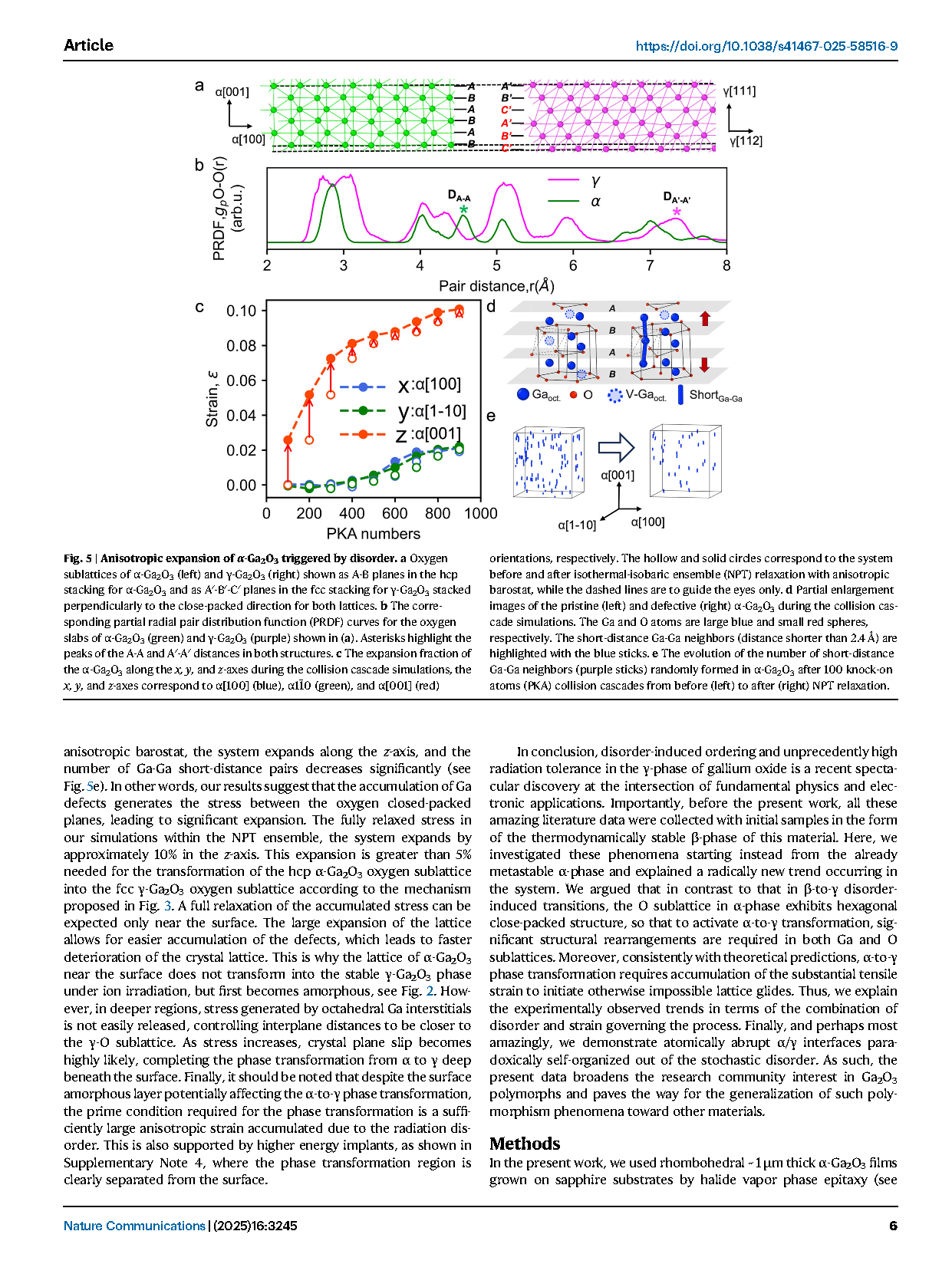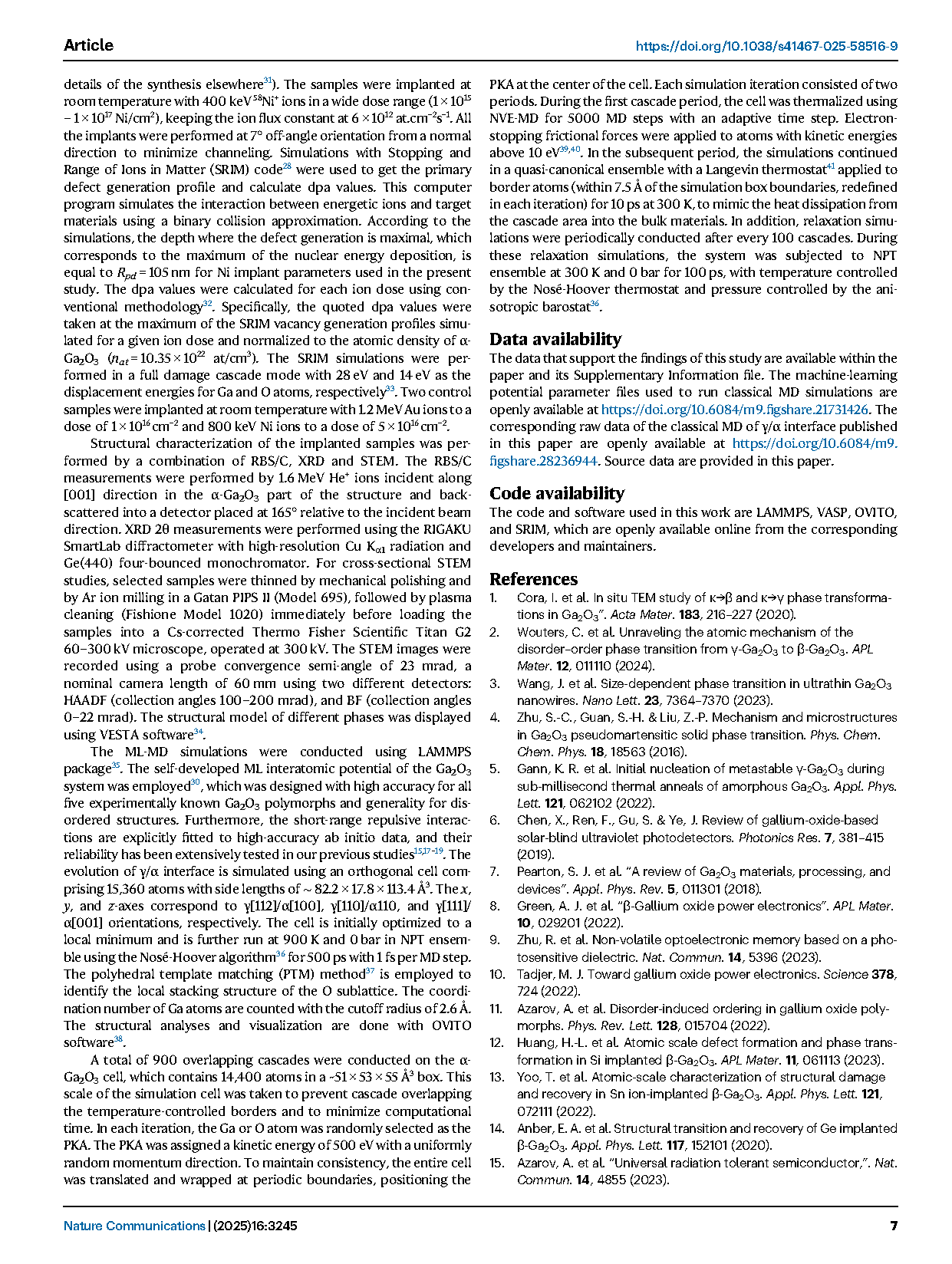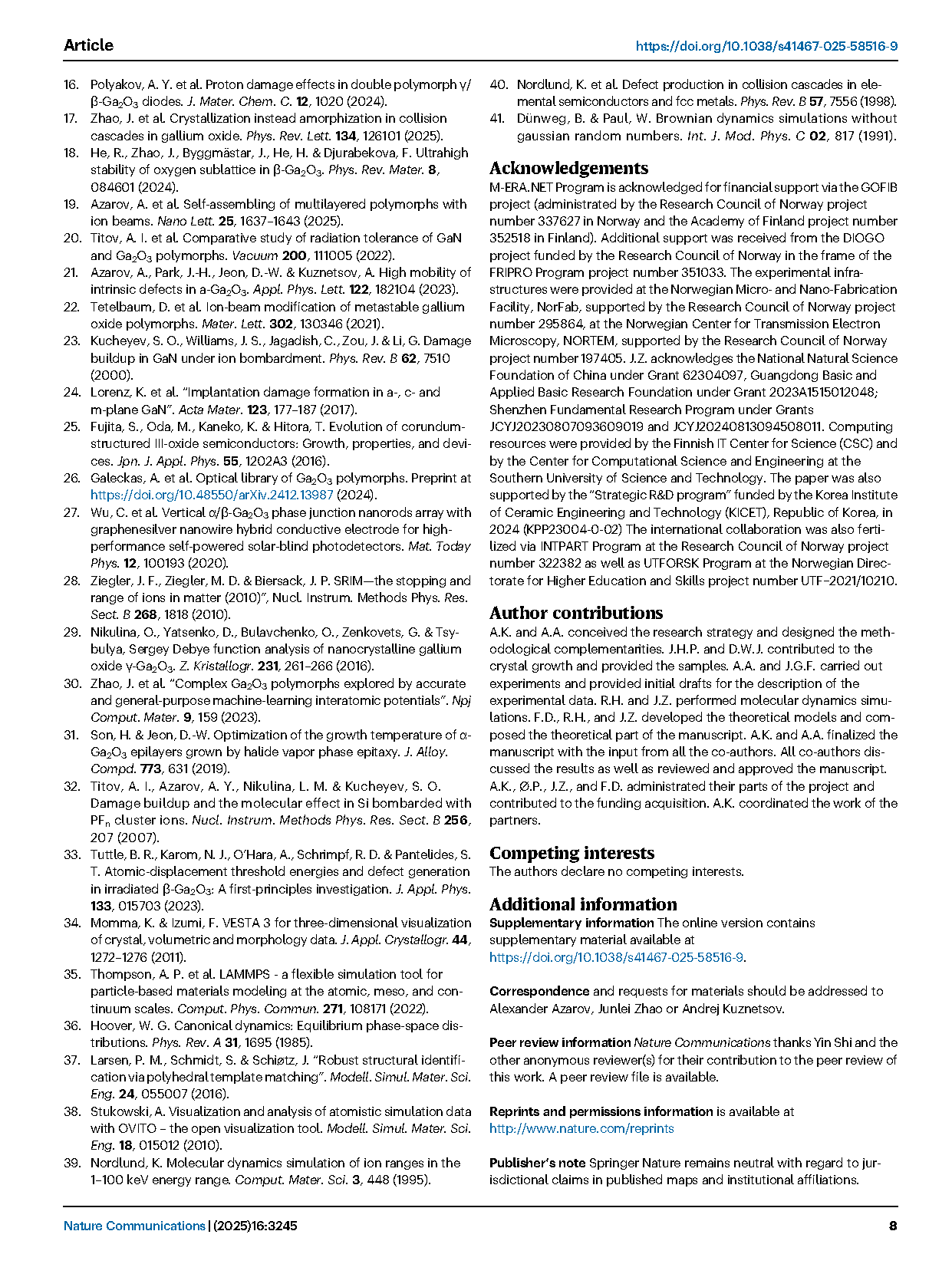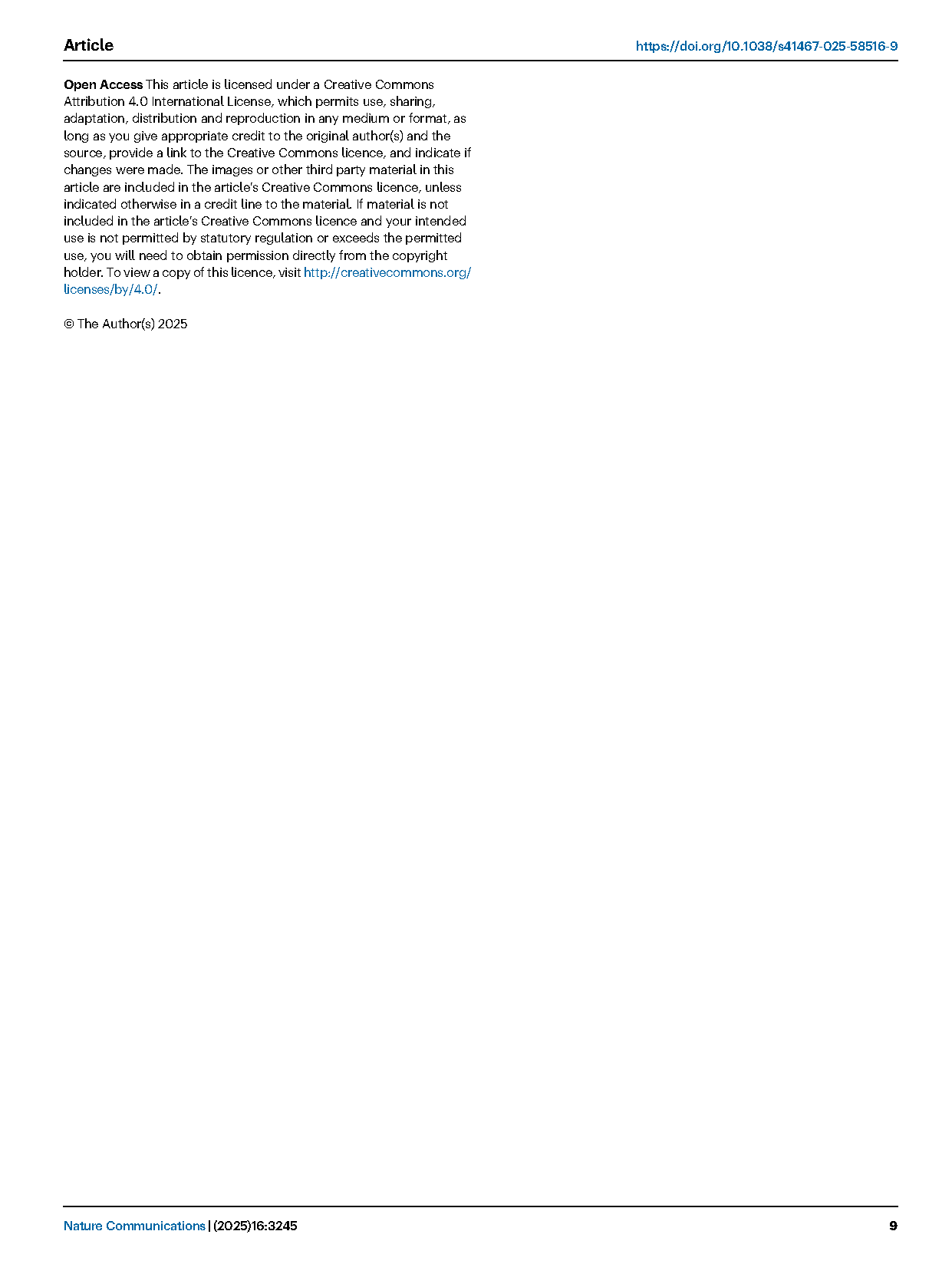

【International Papers】Phase glides and self-organization of atomically abrupt interfaces out of stochastic disorder in α-Ga₂O₃
日期:2025-04-09阅读:503
Researchers from the University of Oslo have published a dissertation titled " Phase glides and self-organization of atomically abrupt interfaces out of stochastic disorder in α-Ga2O3" in nature communications .
Acknowledgements
M-ERA.NET Program is acknowledged for financial support via the GOFIB project (administrated by the Research Council of Norway project number 337627 in Norway and the Academy of Finland project number 352518 in Finland). Additional support was received from the DIOGO project funded by the Research Council of Norway in the frame of the FRIPRO Program project number 351033. The experimental infrastructures were provided at the Norwegian Micro- and Nano-Fabrication Facility, NorFab, supported by the Research Council of Norway project number 295864, at the Norwegian Center for Transmission Electron Microscopy, NORTEM, supported by the Research Council of Norway project number 197405. J.Z. acknowledges the National Natural Science Foundation of China under Grant 62304097, Guangdong Basic and Applied Basic Research Foundation under Grant 2023A1515012048; Shenzhen Fundamental Research Program under Grants JCYJ20230807093609019 and JCYJ20240813094508011. Computing resources were provided by the Finnish IT Center for Science (CSC) and by the Center for Computational Science and Engineering at the Southern University of Science and Technology. The paper was also supported by the “Strategic R&D program” funded by the Korea Institute of Ceramic Engineering and Technology (KICET), Republic of Korea, in 2024 (KPP23004-0-02) The international collaboration was also fertilized via INTPART Program at the Research Council of Norway project number 322382 as well as UTFORSK Program at the Norwegian Directorate for Higher Education and Skills project number UTF−2021/10210.
Background
Recently, gallium oxide (Ga2O3) has attracted the attention of a broad audience spreading from those dealing with fundamentals of the phase transitions to device application experts. Among the rest of the highlights, there was a discovery of disorder-induced ordering in Ga2O3 and high radiation tolerance of the formed structures. Specifically, it was shown that even though its thermodynamically stable monoclinic polymorph (β-Ga2O3) could be swiftly disordered, it did not amorphized under irradiation but converted to a cubic defective spinel polymorph (γ-Ga2O3), remaining crystalline independently of subsequent irradiation. Moreover, electronic radiation tolerance tests performed by comparing Schottky diodes fabricated out of β- and γ-polymorphs showed that the γ-Ga2O3-based diodes remained functional, while β-Ga2O3-based diodes lost their rectification under identical irradiation conditions.
Abstract
Disorder-induced ordering and remarkably high radiation tolerance in γ-phase of gallium oxide is a recent spectacular discovery at the intersection of the fundamental physics and electronic applications. Importantly, by far, these data were collected with initial samples in form of the thermodynamically stable β-phase of this material. Here, we investigate these phenomena starting from metastable α-phase and explain radically new trend occurring in the system. We argue that in contrast to that in β-to-γ disorder-induced transitions, the O sublattice in α-phase exhibits hexagonal close-packed structure, so that to activate α-to-γ transformation significant structural rearrangements are required in both Ga and O sublattices. Moreover, consistent with theoretical predictions, α-to-γ phase transformation requires accumulation of the substantial tensile strain to initiate otherwise impossible lattice glides. Thus, we explain the experimentally observed trends in term of the combination of disorder and strain governed process. Finally, we demonstrate atomically abrupt α/γ interfaces paradoxically self-organized out of the stochastic disorder.
Conclusion
In conclusion, disorder-induced ordering and unprecedently high radiation tolerance in the γ-phase of gallium oxide is a recent spectacular discovery at the intersection of fundamental physics and electronic applications. Importantly, before the present work, all these amazing literature data were collected with initial samples in the form of the thermodynamically stable β-phase of this material. Here, we investigated these phenomena starting instead from the already metastable α-phase and explained a radically new trend occurring in the system. We argued that in contrast to that in β-to-γ disorder-induced transitions, the O sublattice in α-phase exhibits hexagonal close-packed structure, so that to activate α-to-γ transformation, significant structural rearrangements are required in both Ga and O sublattices. Moreover, consistently with theoretical predictions, α-to-γ phase transformation requires accumulation of the substantial tensile strain to initiate otherwise impossible lattice glides. Thus, we explain the experimentally observed trends in terms of the combination of disorder and strain governing the process. Finally, and perhaps most amazingly, we demonstrate atomically abrupt α/γ interfaces paradoxically self-organized out of the stochastic disorder. As such, the present data broadens the research community interest in Ga2O3 polymorphs and paves the way for the generalization of such polymorphism phenomena toward other materials.
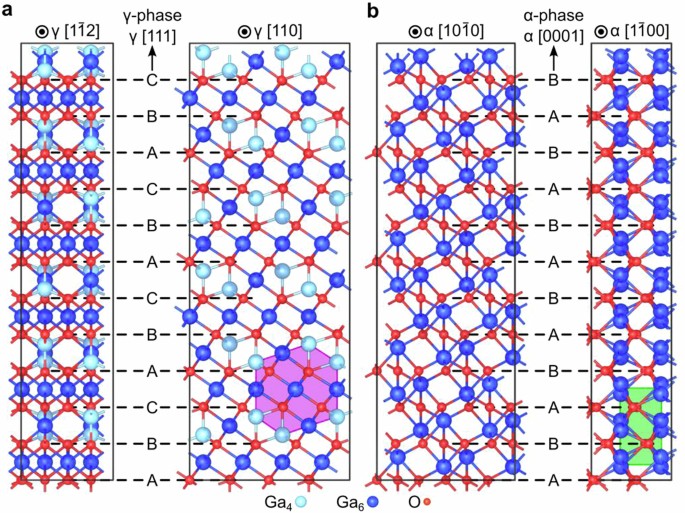
Fig. 1: Structural relationship between different Ga2O3 polymorphs.
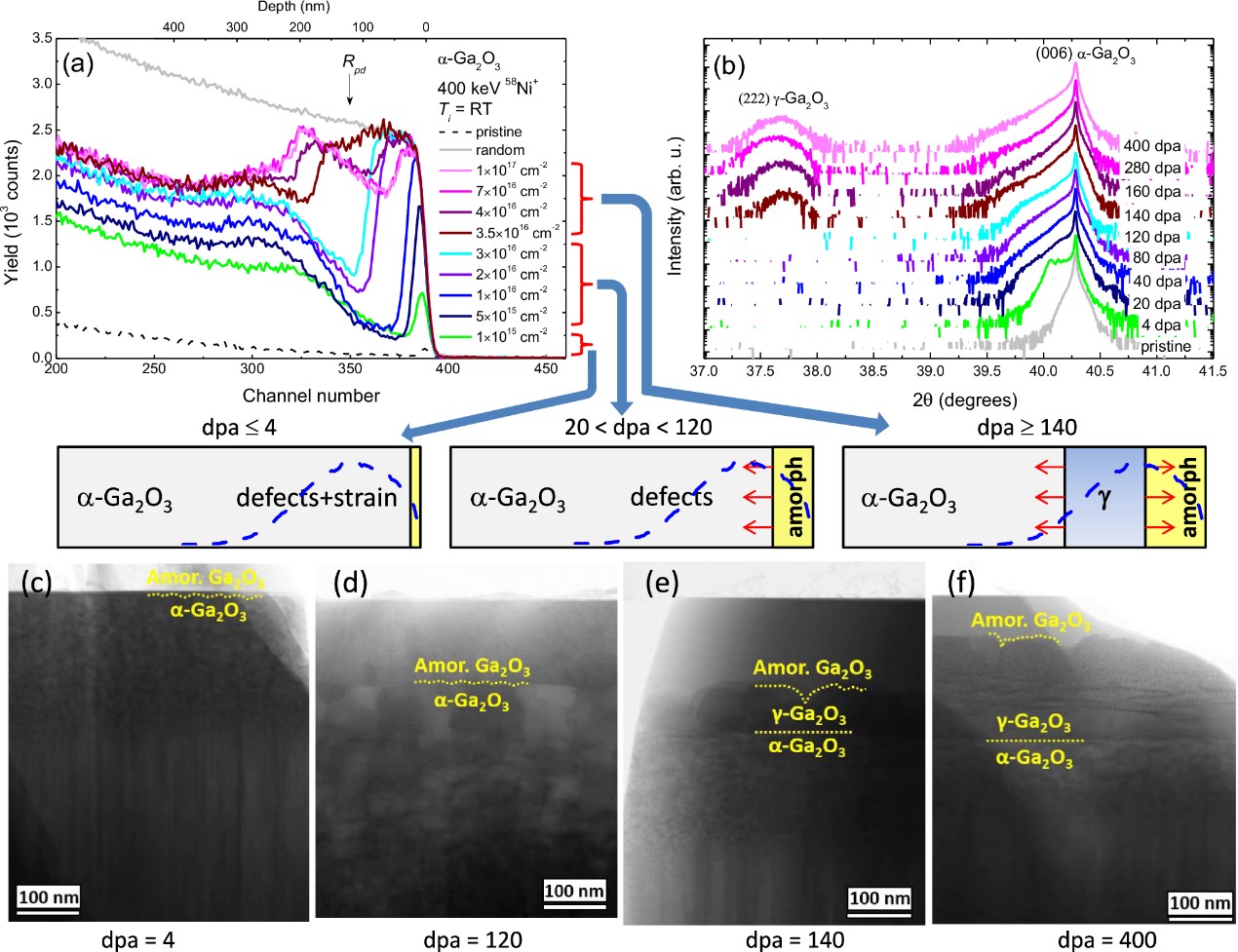
Fig. 2: Phase transformations in α-Ga2O3 as a function of dpa.
DOI:
doi.org/10.1038/s41467-025-58516-9
